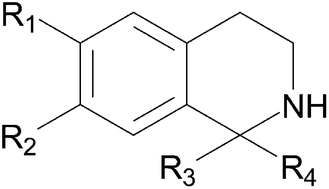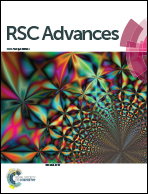1-Aryl-1,2,3,4-tetrahydroisoquinolines as potential antimalarials: synthesis, in vitro antiplasmodial activity and in silico pharmacokinetics evaluation†
Abstract
In the present study, twenty-one 1-aryl-6-hydroxy-1,2,3,4-tetrahydroisoquinoline (THIQ) analogues were synthesized by base-catalyzed Pictet–Spengler reaction, and tested in vitro against P. falciparum using the [3H]hypoxanthine incorporation assay. Two compounds were found to be inactive while seventeen compounds displayed moderate antiplasmodial activity and two compounds were found to be highly active (IC50 < 0.2 μg ml−1). The two highly active compounds, 1-(4-chlorophenyl)-6-hydroxyl-1,2,3,4-tetrahydroisoquinoline and 6-hydroxyspiro[1,2,3,4-tetrahydroisoquinoline-1:1′-cyclohexane], also displayed low cytotoxicity, against rat skeletal myoblast cells, with CC50 values of 257.6 and 174.2 μM respectively. These results justify further investigation of simple 1-aryl-1,2,3,4-tetrahydroisoquinolines as potential anti-malarial agents.


 Please wait while we load your content...
Please wait while we load your content...